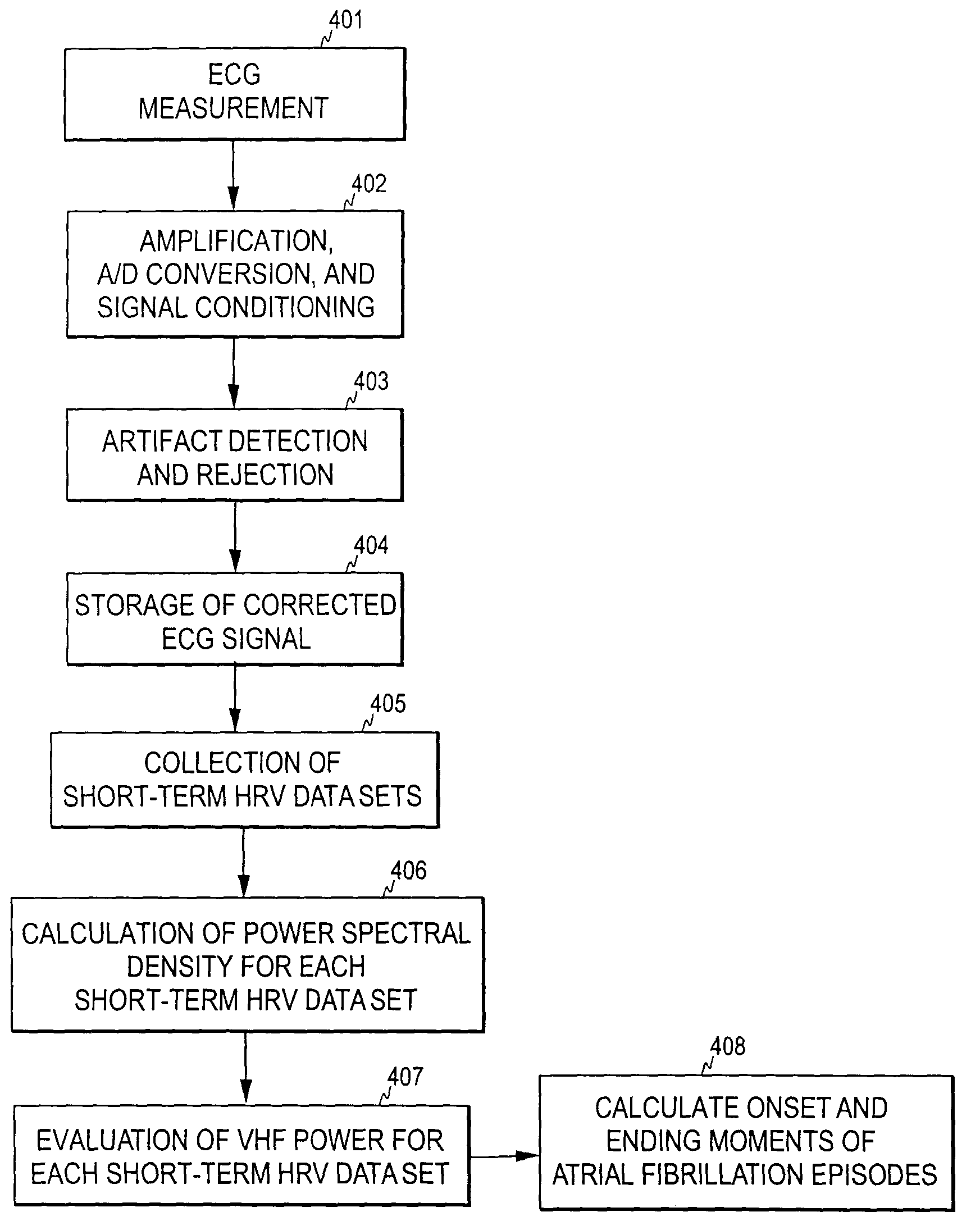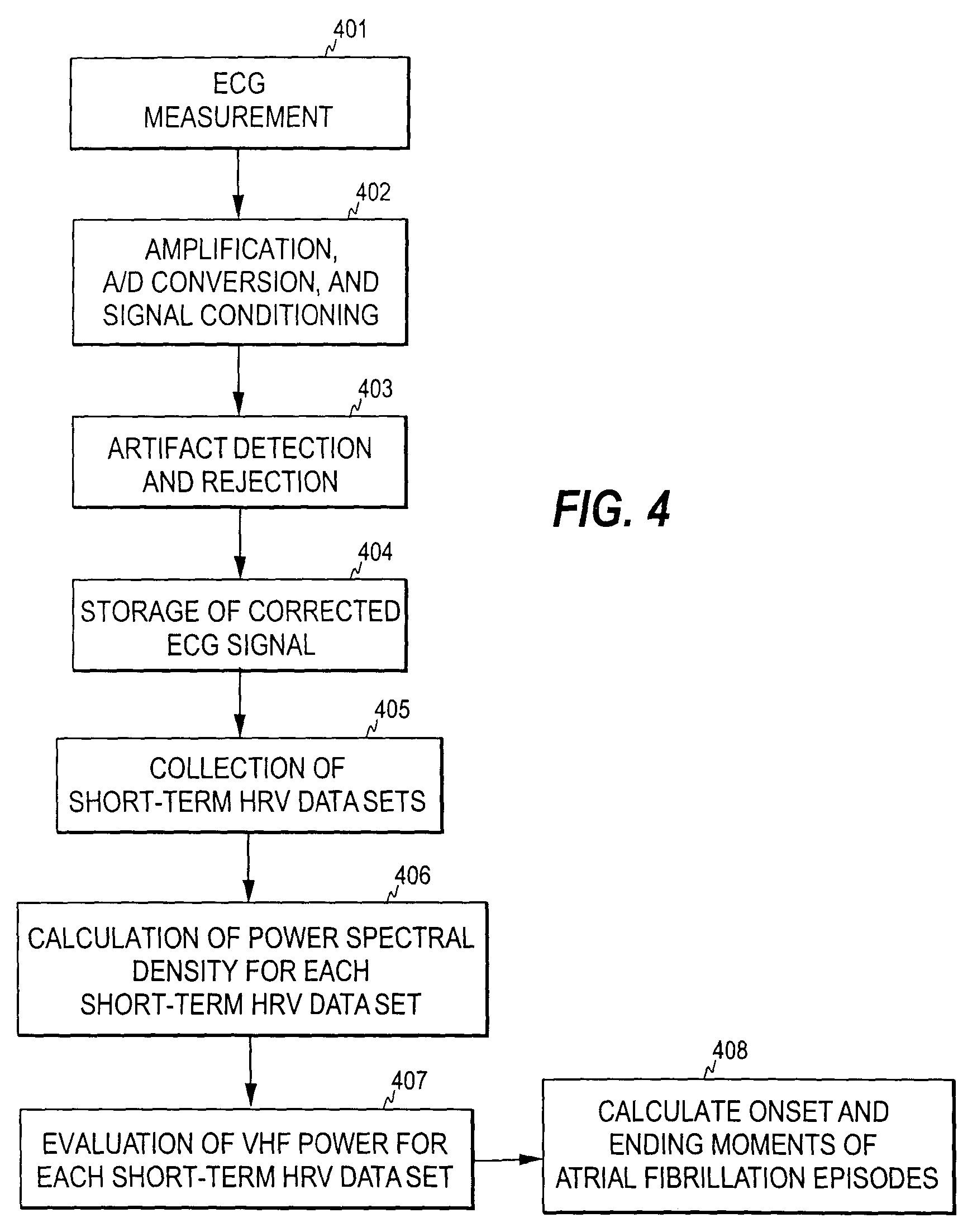Detection of atrial arrhythmia
a technology of atrial arrhythmia and detection method, which is applied in the field of detection method and system for atrial arrhythmia, can solve the problems of atria circulating blood, affecting the normal function of the heart, so as to achieve the effect of reducing the risk of heart failure, and preventing the heart from circulating
- Summary
- Abstract
- Description
- Claims
- Application Information
AI Technical Summary
Benefits of technology
Problems solved by technology
Method used
Image
Examples
Embodiment Construction
[0031]In the present invention, known spectral characteristics of short-term HRV recordings are utilized for detecting AF episodes. This is first discussed with reference to FIGS. 2 and 3. The term short-term here refers to a recording lasting typically a few minutes. The length of the recording is typically between 2 and 5 minutes: The length is typically kept constant once selected, but it may also be changed during the measurement.
[0032]FIG. 2 illustrates the results of a power spectral density analysis of a short-term HRV data set recorded from a healthy person. As can be seen, the power of a HRV signal is distributed around three main components, which are termed the very low frequency (VLF) component, the low frequency (LF) component, and the high frequency (HF) component. When the same measurement is performed on a patient suffering from an AF episode, the power distribution changes as is shown in FIG. 3. Besides that the three main peaks may now be less distinguishable, a ma...
PUM
 Login to View More
Login to View More Abstract
Description
Claims
Application Information
 Login to View More
Login to View More - R&D
- Intellectual Property
- Life Sciences
- Materials
- Tech Scout
- Unparalleled Data Quality
- Higher Quality Content
- 60% Fewer Hallucinations
Browse by: Latest US Patents, China's latest patents, Technical Efficacy Thesaurus, Application Domain, Technology Topic, Popular Technical Reports.
© 2025 PatSnap. All rights reserved.Legal|Privacy policy|Modern Slavery Act Transparency Statement|Sitemap|About US| Contact US: help@patsnap.com



